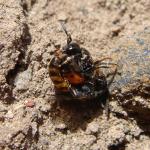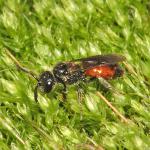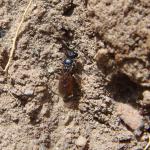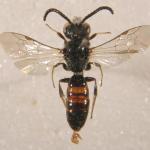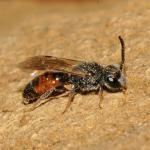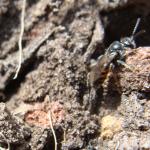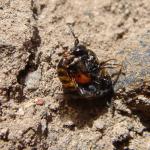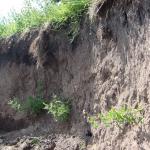Sphecodes fasciatus VON HAGENS 1882; Sphecodes affinis VON HAGENS 1882; Sphecodes rimalis PÉREZ 1903; Sphecodes impunctatus MEYER 1922;
This species closely resembles several other small Sphecodes species and is best identified from characters of the male genitalia.
A common bee, occurring throughout much of Britain and Ireland, including the Isles of Scilly, the Isle of Man and the Channel Islands, but not as far north as the Northern Isles.
Abroad, predominantly a Western Palaearctic species but with some information from central Siberia (Russian Federation).
This species is not regarded as scarce or threatened.
Found in many different open habitats, with its several hosts. It is often found in gardens in the south.
Univoltine. The female flies from early April to early September and the male from mid June to late September.
The female is a cleptoparasite and so it does not prepare its own nests. Hosts include Lasioglossum nitidiusculum (Kirby), L. parvulum (Schenck) and probably several other small Lasioglossum species, including L. morio (Fabricius), L. leucopus (Kirby), L. pauxillum (Schenck), L. rufitarse (Zetterstedt) and L. sexstrigatum (Schenck) (Bogusch & Straka, 2012).
The bee visits Asteraceae such as dandelion, mayweed and thistle, and Apiaceae such as hogweed, for nectar only.
No data available.
2019


